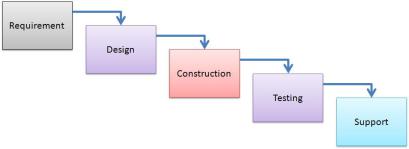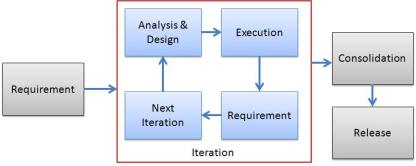Time-to-market pressures, rapidly changing consumer needs coupled with ever-changing technology and shorter release cycles have triggered the need to develop and release products faster. These, along with geographically distributed development centers and a wide spectrum of stakeholders, has made product development extremely complex.
At Brainyhub, we adopt Agile methodology for product development. AGILE is a methodology that promotes continuous iteration of development and testing throughout the software development life cycle of the project. Both development and testing activities are concurrent unlike the Waterfall method. This model enables us to model and document in an agile manner, thereby giving us a flexible approach so that we can easily adapt to the changing requirements.
Agile practices foster collaboration between business and IT which has proved better practice for software development than traditional waterfall methodology. Hence, more and more companies have started adopting agile development practices to easily adapt to changing circumstances.
Agile methodology enables us to release the entire product in versions. There are two kinds of releases in this methodology.
Incremental releases are made by the development releases, whereas major functionalities are released in every production release. The first production release is greater in time than others.

Agile methodology is an alternative to traditional project management, typically used in software development. It helps teams respond to unpredictability through incremental, iterative work cadences, known as sprints.
Agile mythology has small box iterations rather than phases. The output of each iteration will be production release deliverable and could be evaluated and get early feedback.
Agile methodologies embrace iterations. Small teams work together with stakeholders to define quick prototypes, proof of concepts, or other visual means to describe the problem to be solved. The team defines the requirements for the iteration, develops the code, and defines and runs integrated test scripts, and the users verify the results. Verification occurs much earlier in the development process than it would with waterfall, allowing stakeholders to fine-tune requirements while they’re still relatively easy to change.

Extreme Programming advocates frequent “release” in short development cycles, each release follows with several iterations. When the product release has enough features to satisfy the user, the team terminates iteration cycle and releases the software.
It promotes adaptive planning, evolutionary development & delivery, a time-boxed iterative approach, and encourages rapid and flexible response to change.
